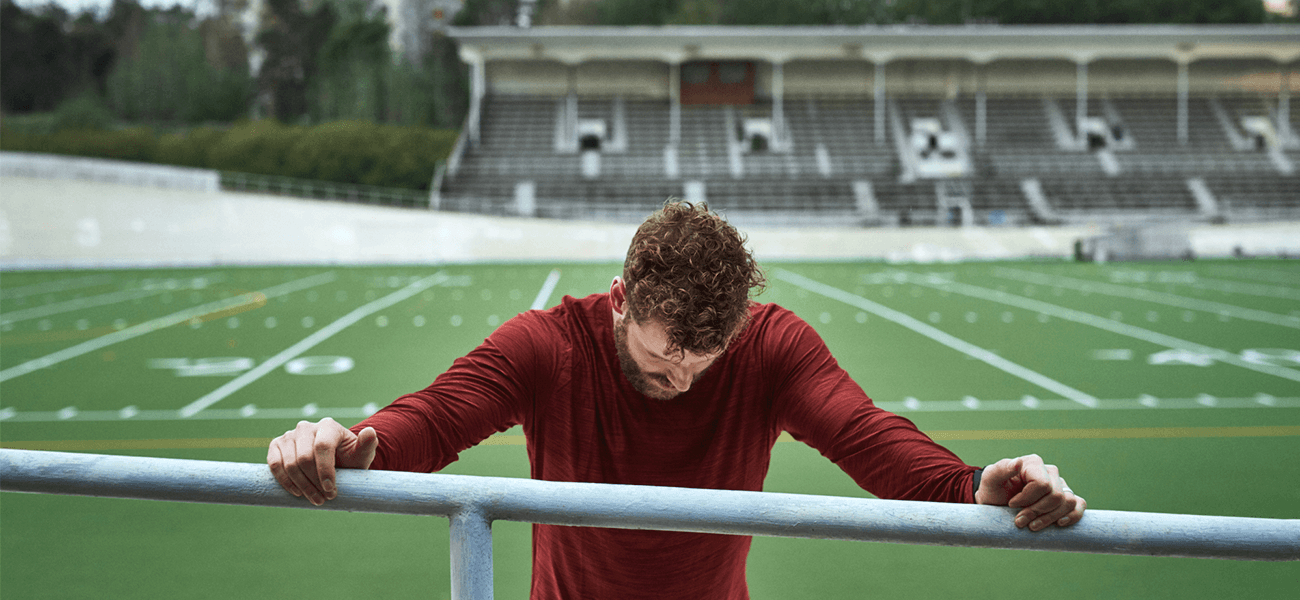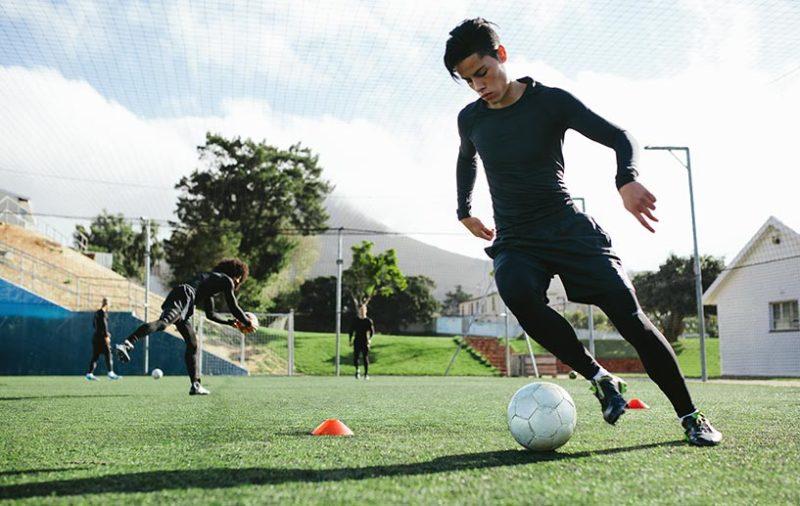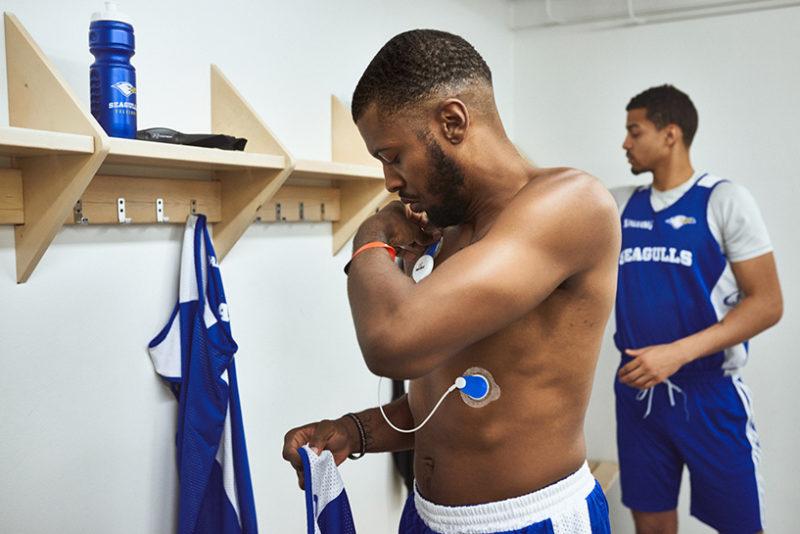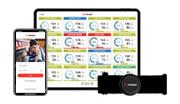
“A perfect storm of things was about to collide. I was stressed about issues I’d been having with my family. I wasn’t sleeping well. On the court, I think the expectations for the season, combined with our 4–5 start, were weighing on me.” – NBA star Kevin Love describing the lead up to a panic attack he suffered during a game in 2017.
Love’s experience may be an extreme outcome, but stress is an inescapable part of sport at the elite level and it is a double-edged sword.
Harness it correctly and it can propel you to perform at your peak when it matters most and allow you to thrive under the high-pressure environment of game day. But, struggle to balance stressors with appropriate recovery – or fail to take them into account when monitoring load – and it can lead to mental errors and physiological issues.
Recent studies have shown increased psychological stressors “slow down the rate of strength recovery from strength training workouts” and inhibit short-term muscular recovery from resistance exercise. Meanwhile, if you lack the necessary resilience to cope with stressors it can have a negative impact on cognitive functions key to good performance, like reaction times and decision-making.
But what exactly are these stressors and how can coaches and athletes identify them in order to adjust and, ultimately, limit the negative impact they can have?
Competitive, Organizational, Personal
Separating the types of psychological stress athletes encounter into three categories is a useful step. A 2000 study which looked at the sources of stress affecting professional Australian footballers found that “players identified sources of stress that went beyond the competitive event” and argued “the entire sporting experience needs to be taken into account when developing stress management strategies”.
In 2006, Fletcher et al. categorized these types of stress as; Competitive, Organizational and Personal. Understanding this can help both coach and player build a big picture view of what is holding back, or helping, performance.
1) Competitive Stressors
Competitive stressors are stressors related directly to the sporting situation the athlete finds themselves in. Essentially, they are the most obvious stressors and are most directly linked to what happens during training or in a game.
Common competitive stressors include;
- Injury
- Returning from injury
- Pressures leading up to game day
- Pressures to perform during a big game
- The opposition
- Competition for places
- Issues with form and/or technique
“Imagine you had a bad day and then you had thousands of fans telling you you’re terrible…There is a massive stress in the game when you have to constantly be your best.” – West Ham United footballer, Michail Antonio.
Each athlete is different, and their response to these competitive stressors will vary too. Finding the sweet spot where these stressors are contributing to an engaged, locked-in mindset can be the difference come crunch time. Knowing when a competitive stressor is overwhelming an athlete and having a detrimental affect can be an important preventative measure to avoid further issues down the road.

2) Organizational Stressors
Organizational stressors are “an ongoing transaction between an individual and the environmental demands associated primarily and directly with the organization within which the athlete is operating” (Hanton et al.)
Common organizational stressors include;
- Training issues (change in set up/coach, training content, training practicalities)
- Interpersonal conflict with teammates/coaches
- Perceived lack of support from organization
- Travel/accommodation issues
Organizational stressors can be attributed to, and therefore solved by, the coaching and organizational set up surrounding a team. Things like tight travel schedules and organizational decisions out of your control mean there isn’t always a solution to organizational stressors. Nevertheless, being aware of which players are struggling to deal with certain situations provides an opportunity to address this and, ideally, find a solution that works for them and the team in pursuit of victory.
A study published in 2018 looking at the influence of psychosocial stress factors on acute and overuse injury risk in elite female football players noted that players who reported teammates as a source of stress had “a greater risk of sustaining an acute injury” whilst “players citing a coach as a source of stress were at greater risk of sustaining an overuse injury”.

3) Personal Stressors
Personal stressors are the environmental and personal demands placed on the athlete directly associated with personal life events.
Common personal stressors include;
- Lifestyle issues/changes (alcohol, sleep)
- Financial issues
- Traumatic life events
- Outside commitments (e.g. University degree for student-athletes)
By their very nature, personal stressors can be difficult to spot. Athletes can be carrying baggage or issues from their life away from the team with them into competition and training. Having a positive, trusting relationship with your athletes is important, therefore, so that players can open up to you about potential personal issues.
“Athlete well-being and performance are not separate,” explained Andy Kirkland, Ph.D., a lecturer in sports coaching and expert in endurance sports who has worked with Scottish Rugby and elite triathletes. “Stressors experienced in high-performance are somatic, psychological and social. Components are inseparable. Social factors are usually causal in terms of ‘chronic overload’ but rarely addressed.”
Getting the Big Picture
Firstbeat’s Stress & Recovery analysis feature helps you dig down into that deeper level of player understanding. Using cutting edge analysis of heart rate variability data recorded through the professional grade Firstbeat Bodyguard device (typically worn for 24 hours), athletes get a greater understanding of their own well-being and coaches are provided with a 360-degree understanding of their players’ stress and recovery.

While sleep tracking is becoming main stream in 24/7 wearables, the Firstbeat Sports solution is designed to serve as an educational tool to provide insights into the body’s sources of, and response to, stressors. Getting these insights from a single measurement will stimulate the athlete to make behavioral changes without day-to-day monitoring.
This allows coaches to have a better understanding of what a player is going through in a 24-hour period, including away from the practice facility. Moreover, if a player comes to you describing one of the personal, organizational or competitive stressors discussed above, having them wear the Bodyguard device can help identify how this is impacting the individual and, ultimately, their performance come game day.
You might also be interested in

Firstbeat Sports’ Stress and Recovery Feature Allows True Big Picture Player Monitoring
The impact of stress and effective recovery on athletic performance should not be underestimated and is being taken seriously by teams across the globe. The Stress and Recovery feature means…

Physically Tired, or Mentally Weak? Sports Psychology View of Training & Performance
In this webinar, Dr. Marc Lochbaum explores the physiological and psychological make-up of elite athletes and what it means for training and performance.

“Estimating the Physical and Mental Resources of the Team is the Most Challenging Part”
Heart rate data delivers the big picture and helps players to optimize their performance, says head coach of the Finnish premier ice hockey team.



